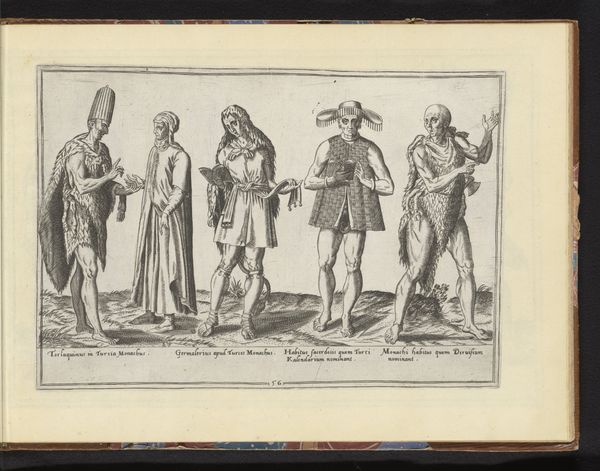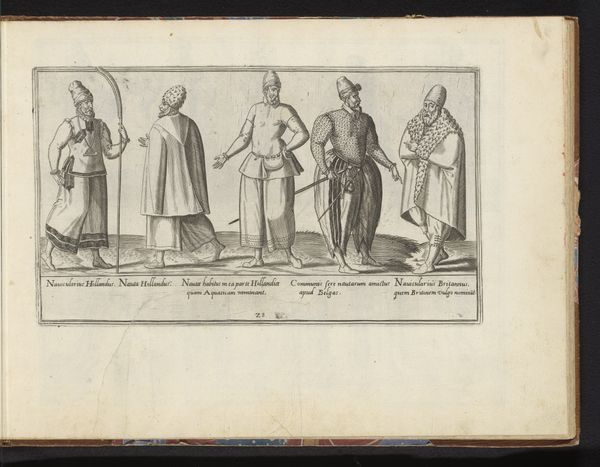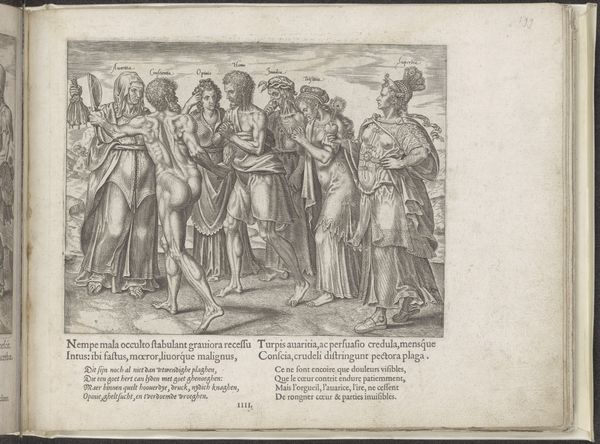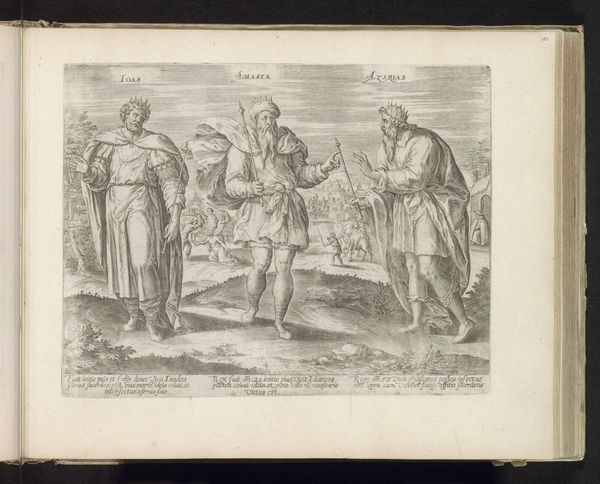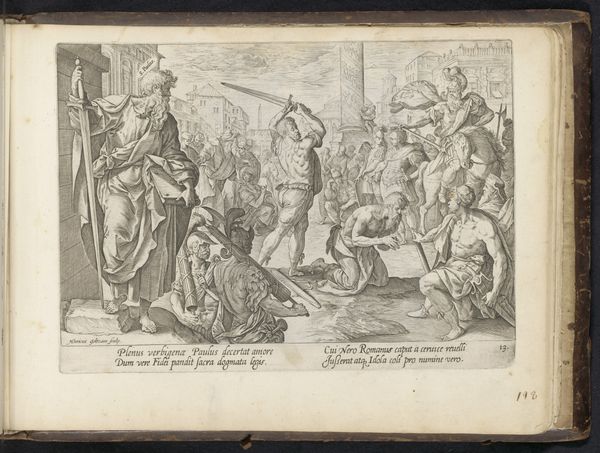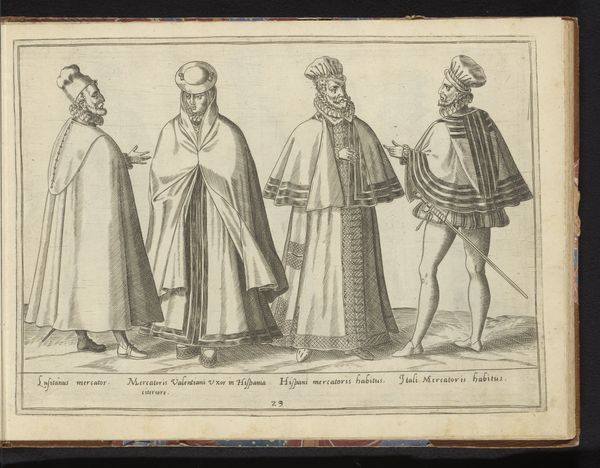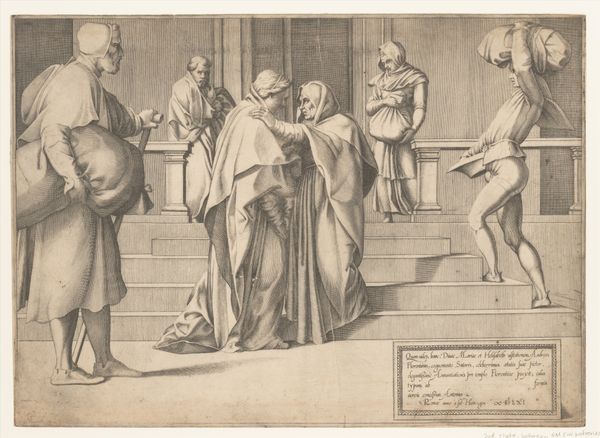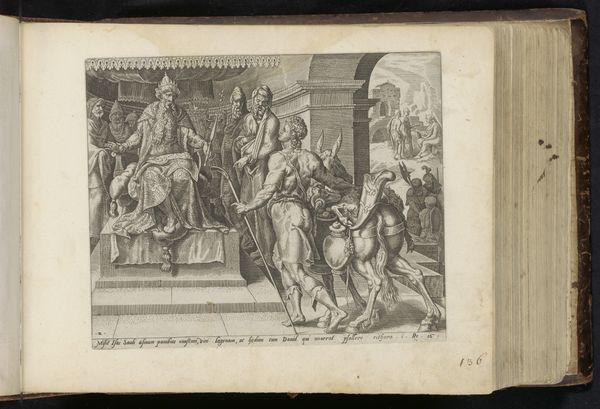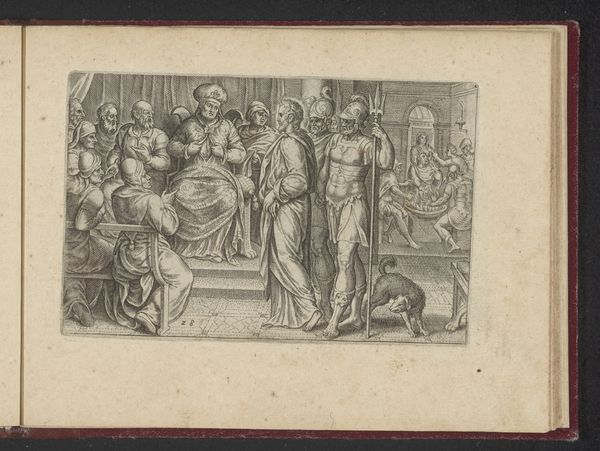
Drie Afrikaanse vrouwen en een man, gekleed volgens de dracht van ca. 1580 before 1581
0:00
0:00
abrahamdebruyn
Rijksmuseum
print, engraving
# print
#
11_renaissance
#
engraving
Dimensions: height 265 mm, width 360 mm
Copyright: Rijks Museum: Open Domain
Editor: This engraving, "Drie Afrikaanse vrouwen en een man, gekleed volgens de dracht van ca. 1580," by Abraham de Bruyn, predates 1581 and is part of the Rijksmuseum's collection. I’m immediately struck by how the subjects are presented, almost like specimens. What's your perspective on this piece? Curator: The way these figures are displayed reveals a lot about the European gaze during the late Renaissance. This wasn't simply an attempt at documentation. Consider the socio-political climate: exploration and early colonialism were burgeoning. Prints like these, widely circulated, shaped European perceptions of "other" cultures. Editor: So it’s less about accurate representation and more about constructing an image? Curator: Exactly. Think about the power dynamics inherent in depicting these individuals in this manner. De Bruyn presents them as examples, specimens if you will, categorized and displayed for a European audience. Note the captions - they reduce individuals to types. How might this impact how Europeans viewed the depicted people and their societies? Editor: I hadn’t considered that the act of categorizing itself is a political statement. By labeling and presenting them this way, it creates a sense of European superiority and justifies colonial actions. Curator: Precisely. These images weren't neutral. They were tools in constructing a narrative that positioned Europe at the center and validated its expansionist ambitions. The choice of dress, pose, and even the presence of weapons serves this narrative. Consider how such readily available images solidified biases. Editor: Looking at it that way, it's quite unsettling to think about the lasting impact of these images. Thank you, I hadn't considered the deeply rooted cultural context that informed not only this artwork but also its purpose in shaping perception. Curator: And it’s a potent reminder that art rarely exists in a vacuum, it is always speaking within, and to, the social and political currents of its time.
Comments
No comments
Be the first to comment and join the conversation on the ultimate creative platform.
